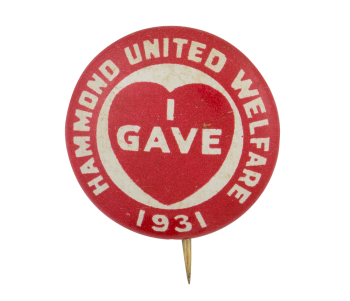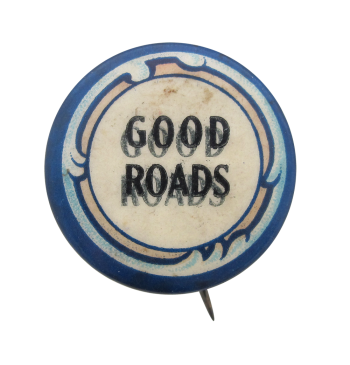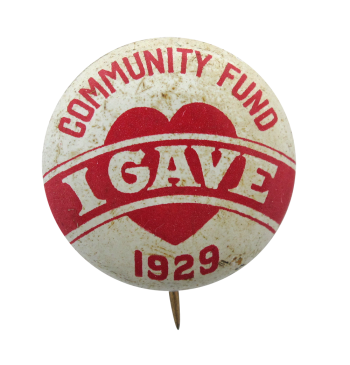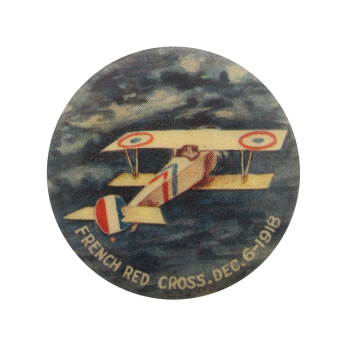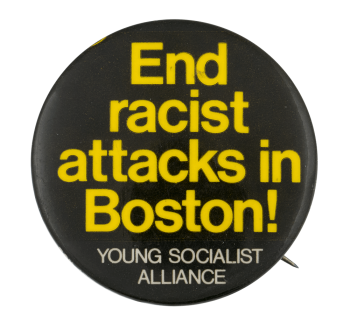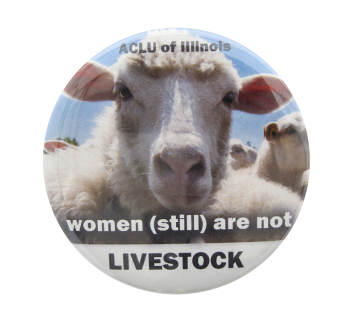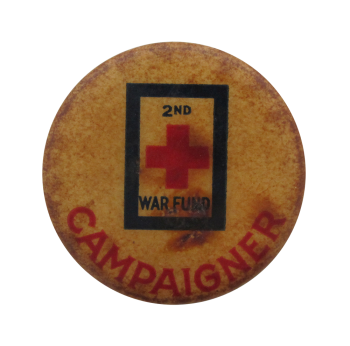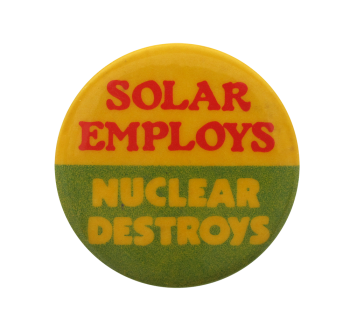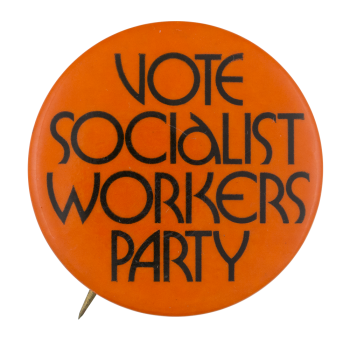Hammond United Welfare
| Category | |
|---|---|
| Additional Images | |
| Sub Categories | |
| Text on Button | HAMMOND UNITED WELFARE I GAVE 1931 |
| Image Description | A large red heart with white text inside it. The heart sits inside a white circile and the circile is surrounded by a red ring with white text inside it. |
| Back Paper / Back Info |
Label Union |
| Back Style | |
| The Shape | |
| The Size | |
| Year / Decade Made | |
| Additional Information | It is unclear exactly what this button was used for, but it may be from Hammond, Indiana's United Welfare drive in 1931. The United Welfare organization was created in the 1920s, and stayed strong through the Great Depression and after. Despite popular belief, charities and community funds like the United Welfare organization were widely supported after the stock market crash of 1929 in the United States; Hammond's 1931 drive is part of this success. The drive was from November 9-14, and urged companies, other clubs, railroads, and individuals to donate money, which was then distributed to the charity of the donor's choice by the United Welfare. This particular drive was the most successful up to that point and raised $101,554.20. |
| Sources |
Hammond Drive More than Success (1931, November 14). Hammond Lake County Times. p. 1. |
| Catalog ID | CA0123 |

